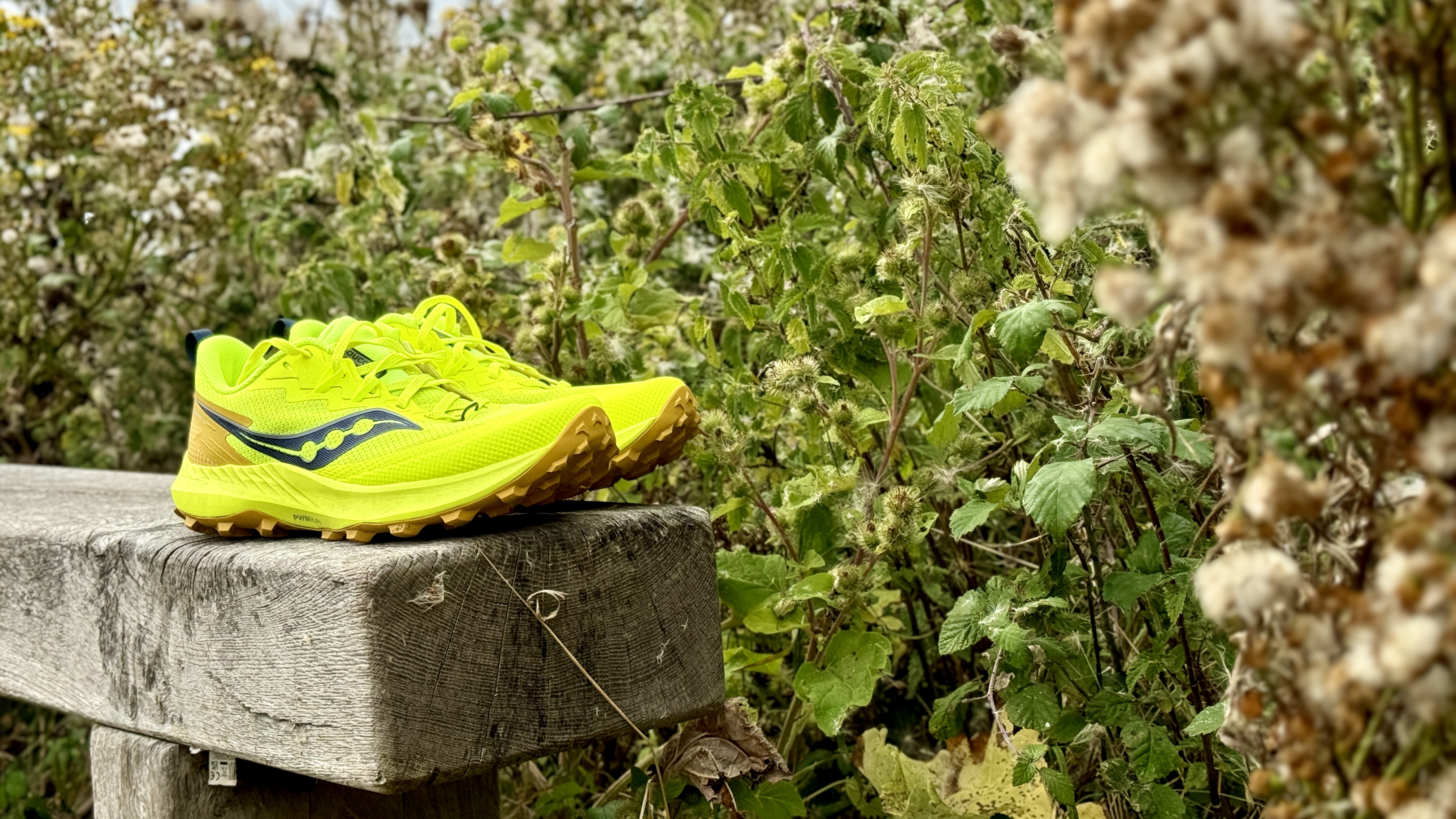
The Saucony Peregrine has come a long way since the original model launched some fourteen years ago. What once looked a bit like an astroturf football boot with a mesh upper has now morphed into a fully-fledged performance trail running beast.
As a result, Peregrine has often topped - or at least hovered in the top three - of our best trail running shoes guide for pretty much most of its life. The story remains the same for the very latest iteration.
Although Saucony Peregrine 12 and Peregrine 13 flip-flopped between offering slightly less midsole foam, a borderline lackadaisical approach to keeping out debris and a bulkier overall silhouette, it feels like 14 may have finally struck the harmonious balance it was always searching for.
A softer blend of the brand’s PWRRUN cushioning has been introduced alongside a new upper construction that aims to keep mud, crud and irritating stones out of the shoe's interior. It's a well-rounded runner at a tempting price.
We subjected a pair of the regular Peregrine 14 (they are also offered in a more expensive Gore-Tex GTX version) to our usual trail routes to see how they performed.
Saucony Peregrine 14 Review
Price and availability
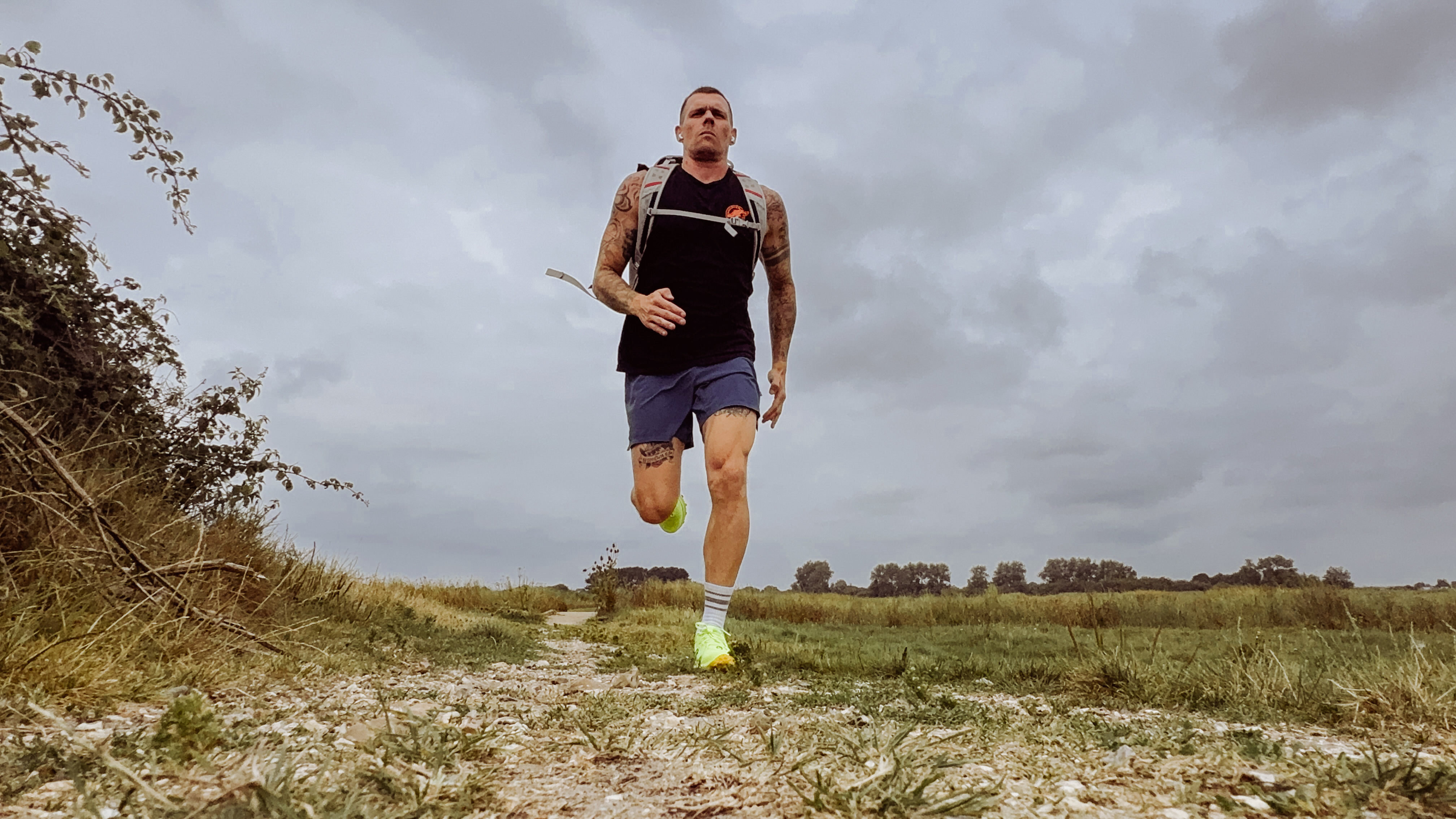
Go ahead and log on to both the Saucony UK and the Saucony US sites for the latest Peregrine model, which retails at £135 and $140 respectively.
The shoe comes in a staggering 11 different colourways in the US market, which neatly range from pure white to possibly the brightest yellow this reviewer has ever laid eyes on (see pics for proof). In the UK, colour choice is limited to just four hues.
There are two widths on offer in some markets, regular or wide, with the latter offered in the US but not the UK at the moment. What’s more, if you go for wide fit, you are currently limited to just black as a colour option.
Half sizes are also on the table, while Peregrine is also sold with a female-specific last that starts at UK size 3 or a US size 5 and again, comes in a wide fit option in the States.
Specifications
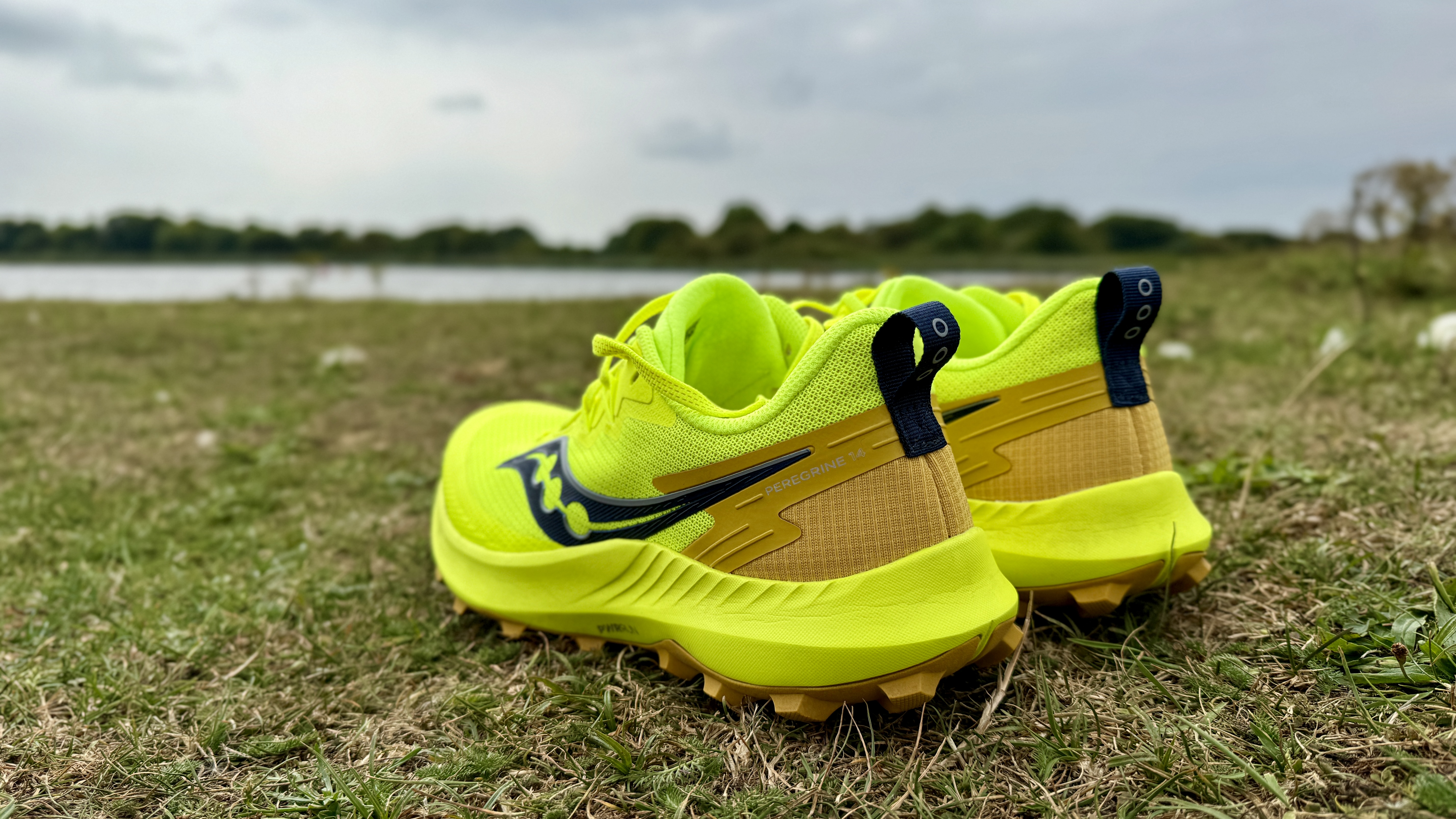
- Best for: casual running, all-day comfort
- Tested weight: 9.4oz/267g (men’s UK 8.5)
- Stack height: 28mm (heel), 24mm (forefoot)
- Drop: 4mm
- Fit: Regular
- Support: Neutral
Design and materials
Most of the differences between this and the Peregrine’s predecessor are negligible, with a slightly wider fit, more underfoot cushioning and a very minor reduction in weight among the key headlines.
But in the running shoe world, small changes can reap big rewards, and this new combination feels just right out on the trails.
That said, it’s a very similar mesh upper at work, which is nice and breathable but doesn't do much to protect from puddles and muddy sections.
Those looking to plough through the really mucky stuff will want to part with an extra £20/$20 and opt for the Gore-Tex model. They look and feel a little bulkier, but at least you won’t be coming home with sopping socks.
There has been a noticeable beefing up of the Peregrine 14’s tongue, which now features extra padding that keeps the slender laces from digging into the forefoot - a particular highlight if you like to lace up tight.
Saucony says it has introduced a softer blend of its PWRRUN cushioning underfoot, something that lacked in the predecessor, while retaining the same rock plate underneath to ensure sharp stones and other debris aren't felt.
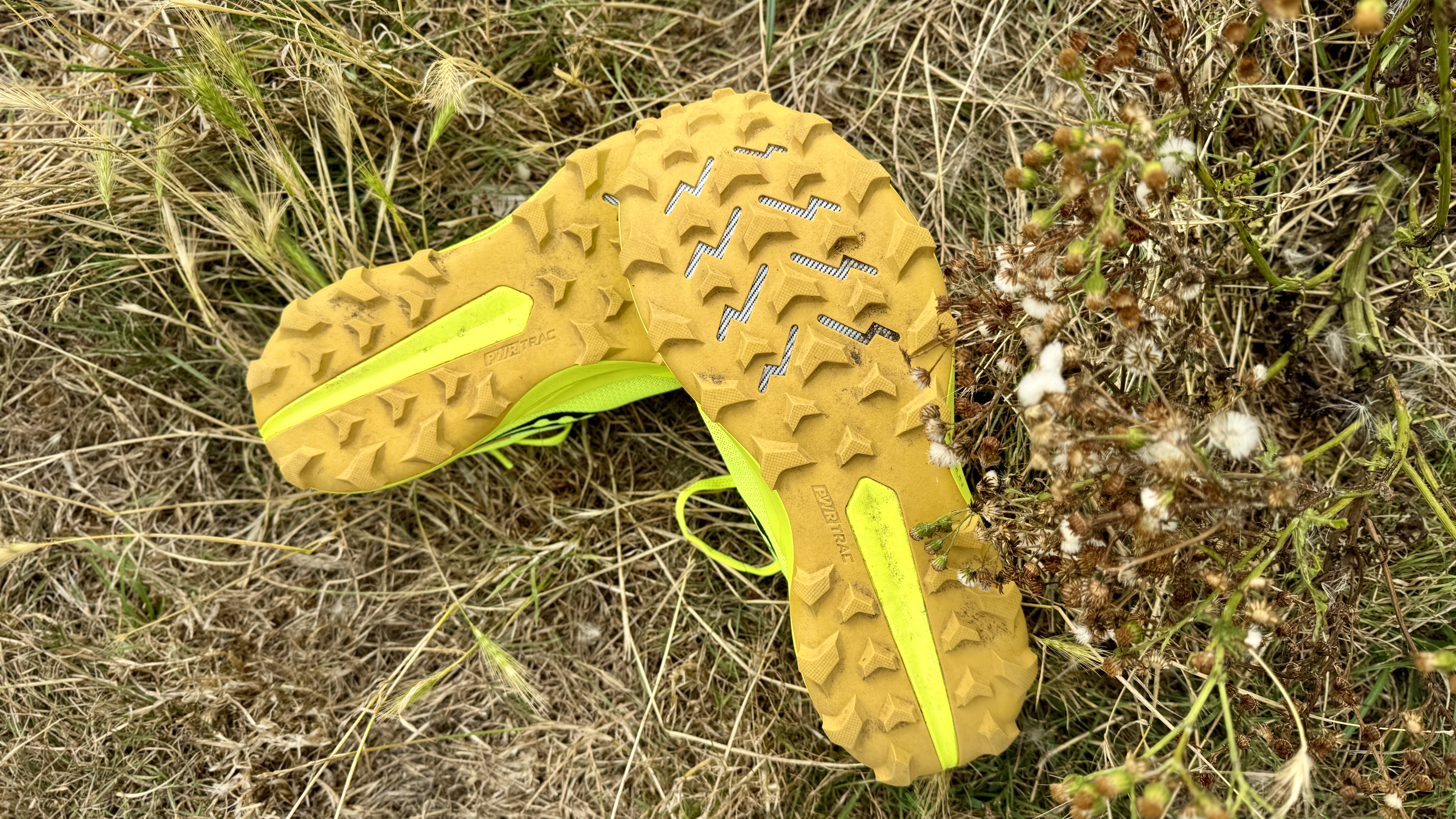
The official weight has dropped slightly, down by 10g (or 0.4oz) over the Peregrine 13, although these sorts of figures are barely noticeable during your daily run.
Styling is largely similar too, with the latest Peregrine appearing a tad sportier and more focussed than some the original shoes in the range. However, Saucony has tweaked the design of the plastic reinforcement that wrap around the toes.
This strip of rubbery substance formerly extended around the toes and then narrowed to a slither that left the area around the digitus minimus pedis (or baby toe, to you and me) exposed. Some users also reported that this feature had a tendency to peel off.
Thankfully, this has been fixed and the design makes more sense, sweeping from the lower mid foot and wrapping all the way around the front to act as a bumper against sharp stuff.
In addition to this, a gusseted tongue and additional protection around the lacing eyelets means it is less likely that smaller stones and bits of dirt will find their way into the shoes.
Performance and comfort
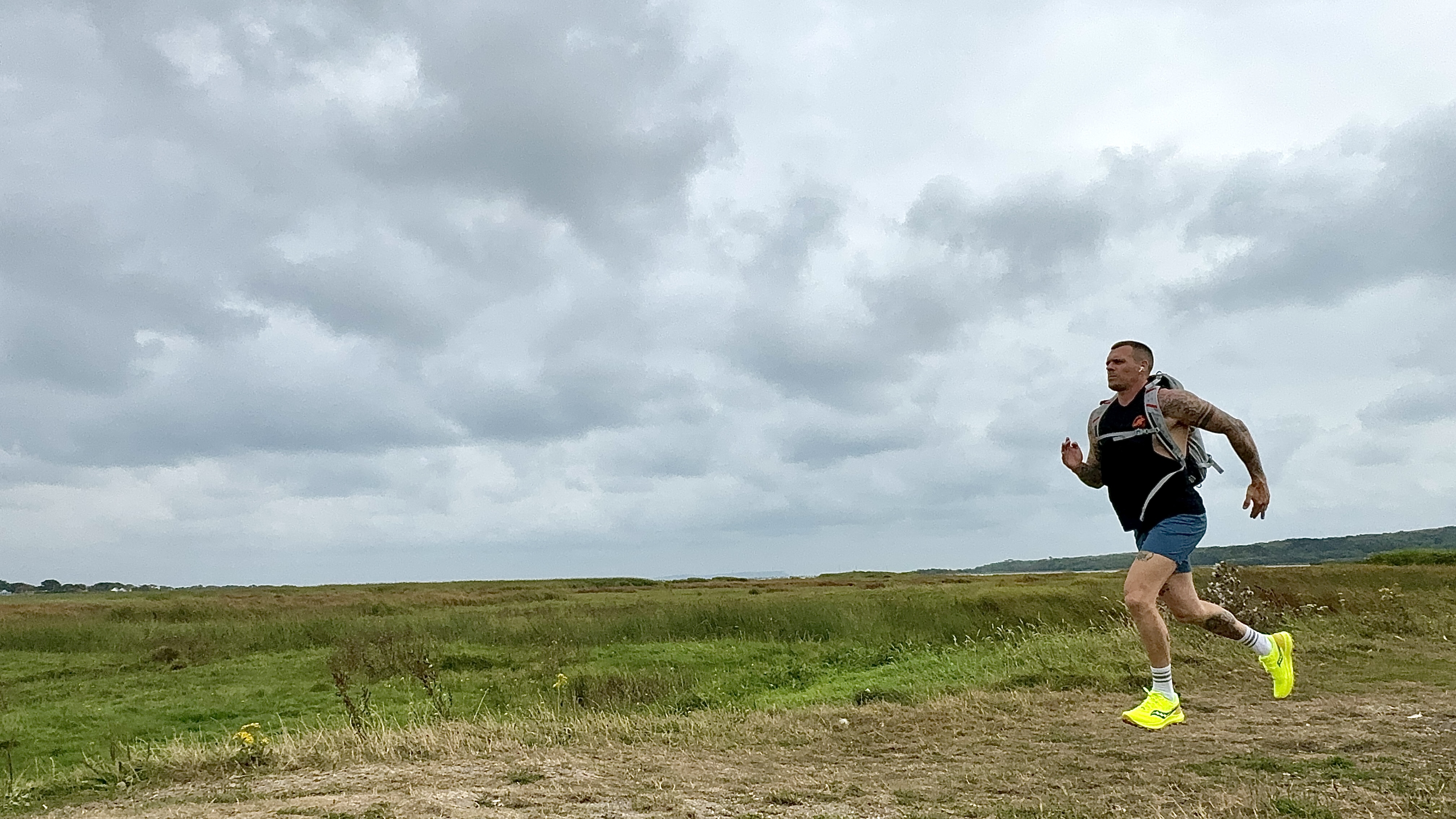
The Saucony Peregrine has long been one of my favourites to lace up and take on a quick trail run, simply because it offers a nice blend of off-road performance with plenty of underfoot cushioning and stability to aid when the perfect running form starts to slip.
Fit and feel is always a very personal thing, but I often find that I irritatingly hover somewhere between a regular and a wider fitting shoe. If I plump for the wider options, they feel like boats on my feet and I don’t enjoy the run. Similarly, selecting the regular fit can result in slight pinching feeling as the miles rack up.
Saucony’s minor tweak to the fit of the Peregrine 14 is a masterpiece (in these eyes, at least) and it is one of the first times a trail running shoe has felt like Cinderella’s glass slipper.
The added padding in the tongue is also a welcome addition and it’s possible to lace these up nice and tight for a glove-like fit. Straight out of the box, I was impressed.
With a 4mm offset, there’s not the same pronounced rocker that you get with something like Hoka’s latest Speedgoat 6 or a more performance orientated trail shoe, such as the Brooks Caldera line, which is 90 per cent midsole (it’s not, but you get the gist).
Even without a huge dollop of energy-returning foam underfoot, I was never really left wanting more spring in my step. The Peregrine 14 is a nice option for those who run at a steady, predictable pace over shorter distances.
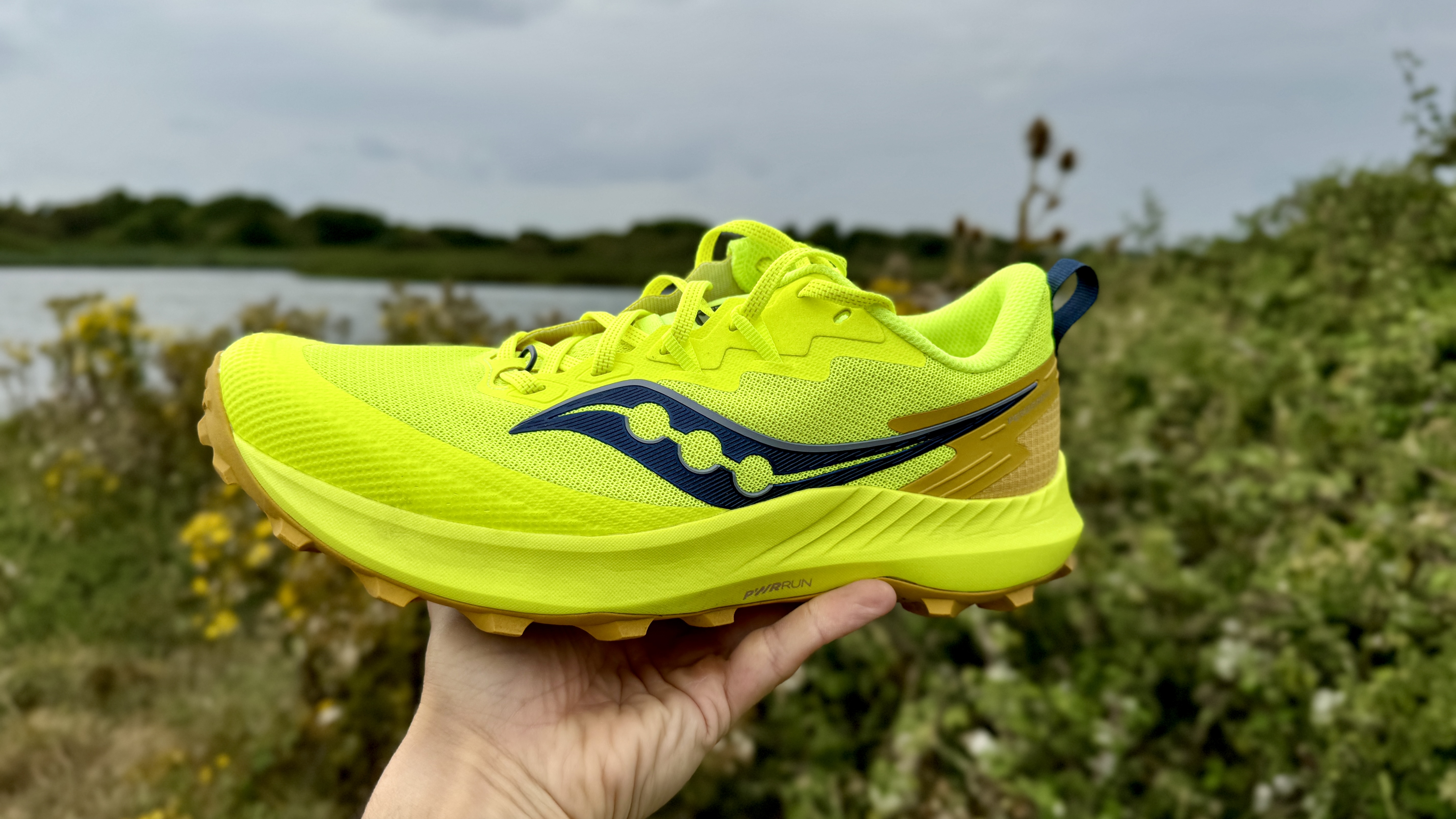
There are definitely better options out there for those training for the UTMB races, or runners that like to pack snacks and smash the trails for hours on end.
But for most mere mortals, a quick blast to clear the head and stretch the legs is what the doctor ordered and the Peregrine 14 is more than happy to oblige.
Saucony’s PWRTRAC sole, complete with 5mm lugs laid out in a chevron design, is great at gripping in the dry and has enough spike to perform when things get a little muddy. The additional debris proaction is also nice to see and I didn’t suffer from any cases of nature making its way into the shoe.
One of the few negatives I found surround the heel collar, which some might find a little flimsy. Although the PWRRUN+ sockliner fit my foot so well, I didn’t notice any rubbing or chafing. Only time will tell if the liner holds out, though.
Secondly, the mesh upper does an admirable job of keeping out rain and mud but it will eventually let the wet stuff through. There is a Gore-Tex version for foul weather runners but it is heavier.
The upside is that the upper offers decent breathability, without letting all the chills in. With that in mind, it’s a solid option to take you through the seasons.
Who’s the Saucony Peregrine 14 for?
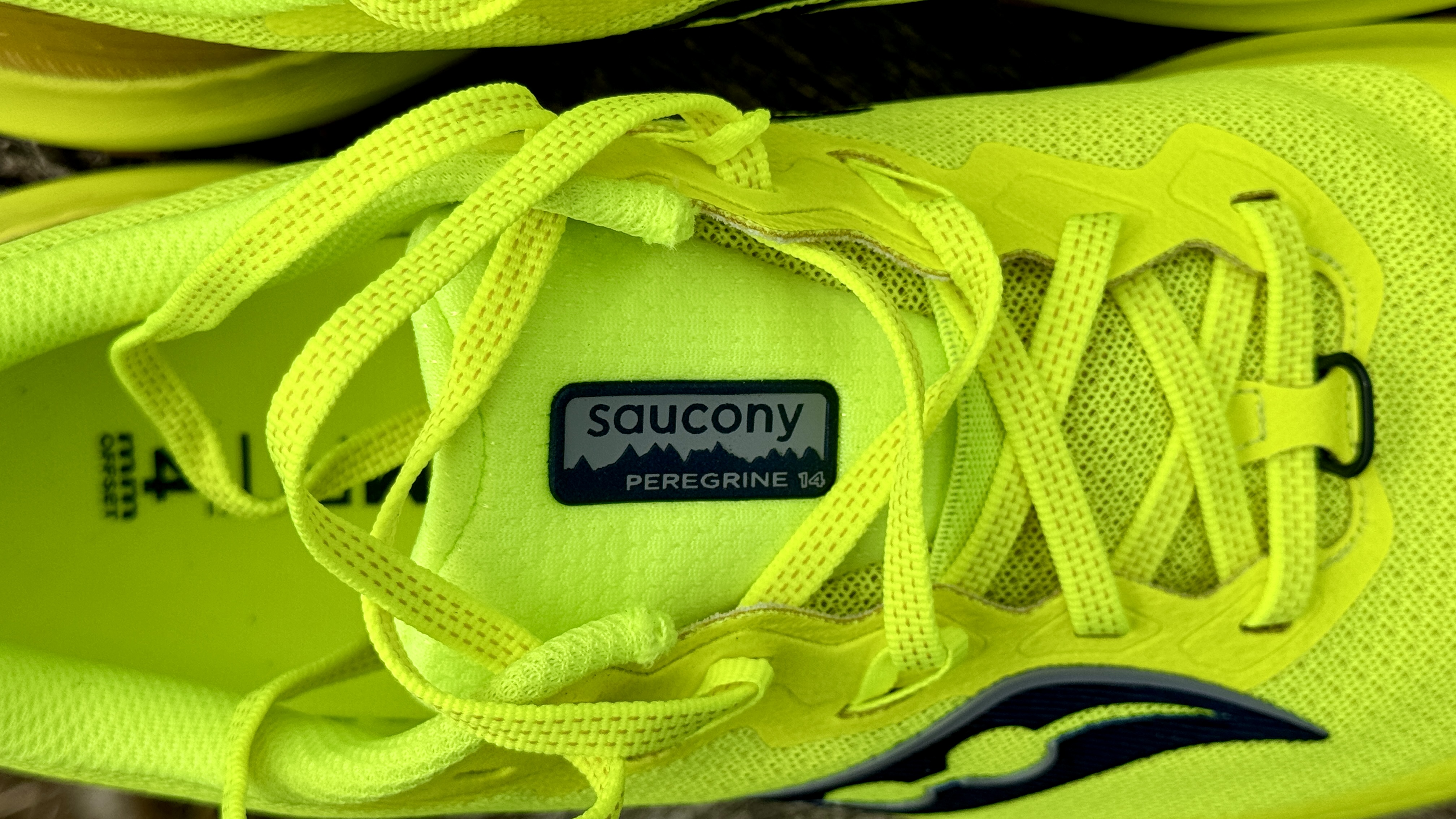
This is not a shoe for long distances, nor is it the thing you’ll want to lace up when gunning for a personal best or outright race win. Saucony offers the carbon-plated Endorphin Edge for runs like that, while Brooks, Nike and Hoka also sell elite-level trail shoes.
Instead, the Peregrine range has long been a jack-of-all-trades, which is just as happy on slower training runs as it is for hiking up mountains in the summer months. There's enough grip underfoot for gnarly surfaces but again, there are more extreme lugs on the market.
But let's be real: most of us want a nice, comfortable shoe that performs when the road runs out and the winding trails call. The Saucony Peregrine 14 excels at this and it's a shoe that I will definitely be reaching for on the regular.
Should you buy the Saucony Peregrine 14?
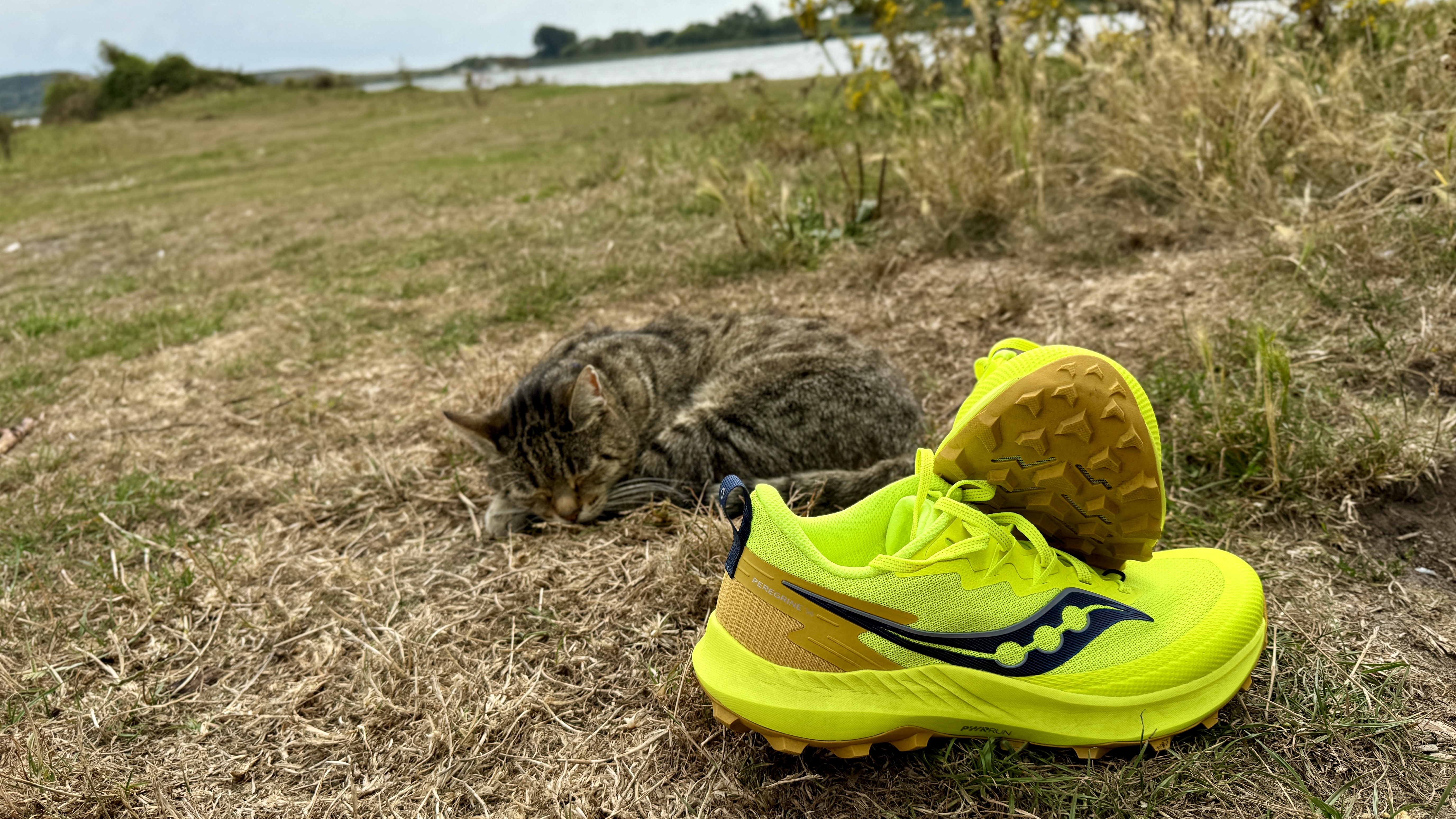
At £135/$140, Saucony has priced the Peregrine 14 competitively, sticking it in the mix with similarly easy going models from Nike, Brooks, Salomon and Hoka.
Personally, I gelled with this shoe instantly and found the last outline perfectly matched the shape of my foot. That said, fit is a personal thing, so I can't guarantee that all feet will experience that same, slipper-like experience.
Even if you don’t, you’ll still find it performs well in all other areas, providing ample underfoot cushioning for shorter to middle distance runs and a tacky, lug-laden sole that grips on most surfaces.
Ultimate judgement will be reserved for a few months, where some of Saucony's historical build quality issues may rear their ugly head. But for now at least, it feels like a generous amount of trail shoe for the money.
Verdict
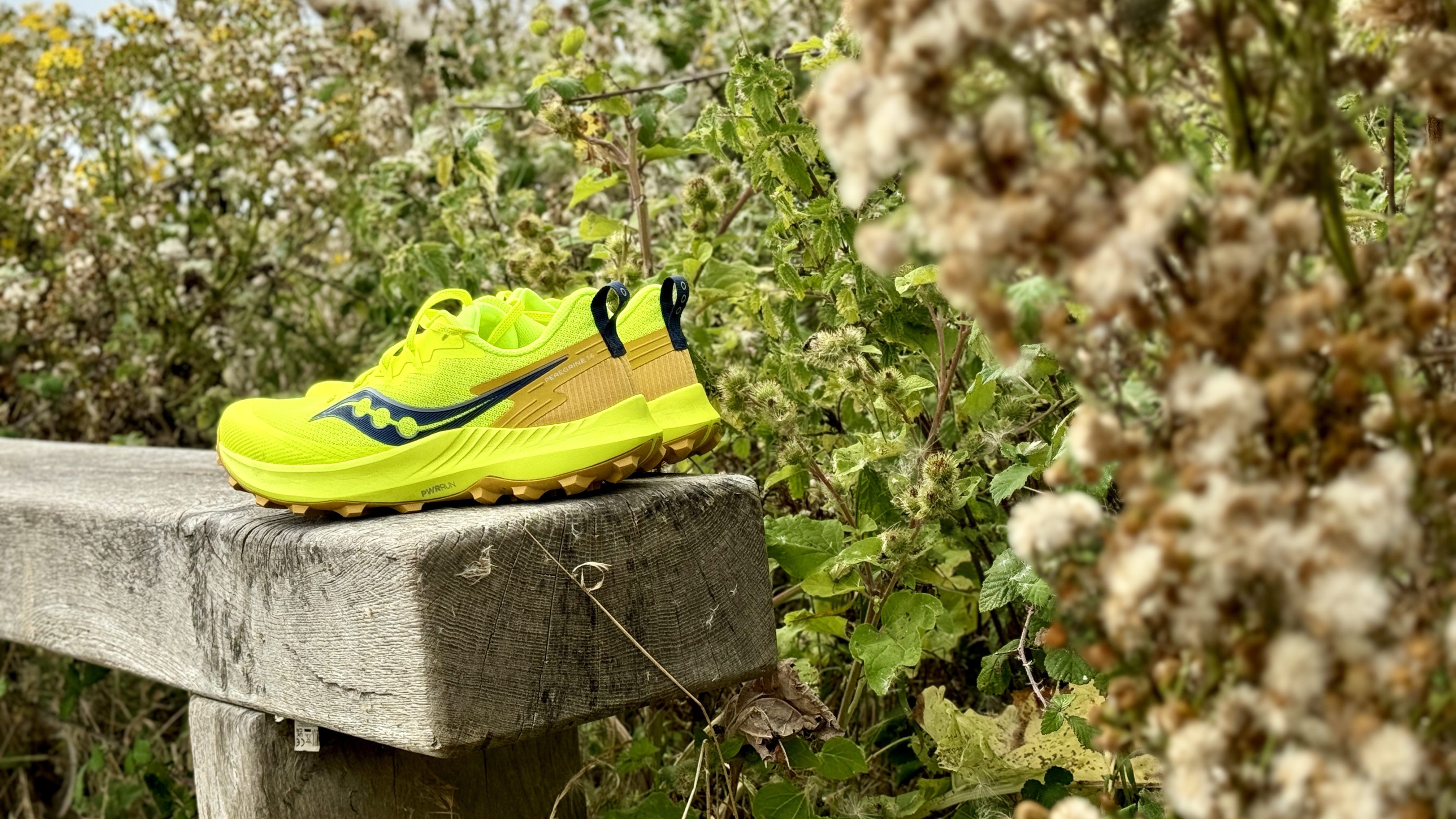
To pinch a phrase from Alan Partridge, it's "evolution, not revolution" when it comes to the Saucony Peregrine 14. But then the brand didn’t really need to make wholesale changes to an already very good trail running shoe.
The minor updates to fit and underfoot cushioning have paid dividends, as this might be the best-fitting Saucony shoe I’ve tested in a long time.
Alongside this, the upper looks great, it is nicely breathable but also protects against the elements - a shoe that can be worn year-round without too much trouble. There's also a gaiter loop at the front of the shoe for when running in really foul weather.
Overall, it’s a very enticing package and while I probably can’t recommend ditching your barely worn Peregrine 13s and upgrading to these, I will suggest you give them a go if you are genuinely in the market for a new pair of solid, middle-distance, neutral arch support trail shoes for moderate to technical terrain.







